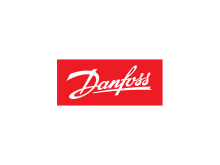Build a product model
For a unified view of your product world
We help you build a digital product model that unifies your product information – the key to efficient processes, seamless data integration, and the creation of your digital twin. With our product model service, we help you bring structure and consistency to your product world.
A product model is a structured digital representation of a company's products, including product families, variants, components, properties, and functions. It establishes a shared understanding of all aspects of the product world and ensures future-proof digitalization.
Today, companies have valuable product information scattered across departments and systems, such as ERP, PIM, PLM, and the product configurator on their websites. Each department contributes its own valid perspective, whether from a sales, marketing, or technical viewpoint.
While this diversity offers opportunities, it also poses a key challenge. Without a shared, overarching understanding of the product structure, digital information flows remain inconsistent, automation potential goes untapped, and building a digital twin becomes difficult.
We model your products
We transform your product world into a unified digital product model. We analyze existing data sources and systems (e.g., PIM, ERP, and PLM), extract implicit models from technical and other documentation, and develop a consistent, machine-readable product model based on OWL (Web Ontology Language) and SKOS (Simple Knowledge Organization System).
We follow established standards, such as the Industrial Data Ontology (IDO, ISO/CD 23726-3) and the Basic Formal Ontology (BFO, ISO/IEC 21838-2:2021).
The product model is created collaboratively with your company’s experts and with the support of AI using natural language processing (NLP).
To ensure the product model is maintained in the long term, we develop a custom governance concept. This is how we work
Your contacts
Product models for the digital twin
Creating product models. This is how we work
- Data analysis and expert interviews. We examine your existing systems and speak with your experts to identify relevant product structures.
- AI-based ontology creation. We use natural language processing (NLP) methods for extractive ontology generation or ontology learning from technical documentation and data sheets.
- Modeling. Based on the gathered information, we model your product world as a formalized, machine-readable ontology.
- Governance concept. To maintain an up-to-date product model over time, we develop a governance strategy incorporating roles, processes, and rules for change management.
Learn more about product models in our FAQs.
FAQs – Frequently asked questions about product modeling
What information does a product model include?
Depending on the analyzed systems and your specific products, a product model includes product families, series, variants, components, properties, and functions. It can also represent product states and errors.
How do we integrate existing systems and data silos into the overarching product model?
The product model provides a common structure to which your existing systems, such as ERP, PIM, or PLM, can be connected. Depending on the quality of the data, different approaches are used:
- For consistent data, simple mapping rules help link siloed information to the model.
- For inconsistent or incomplete data, semantic methods (e.g., NLP) and the knowledge of your experts support integration – because it usually doesn't work without a human in the loop.
We support you with the technical implementation and help select suitable tools so the product model becomes part of your daily system landscape.
How do I keep the created product model up to date?
With our governance concept, which involves defining change processes and roles, your product model will remain up to date and future-proof.
What are the benefits of building a product model?
Data integration. A central product model provides the basis for seamless data integration. It acts as a shared interface between systems such as ERP, PIM, PLM, and configurators. This eliminates the need for complex, many-to-many system connections. Each system only needs to connect to the product model once to be automatically linked to the others. This reduces complexity and enables consistent, interconnected data flows.
Basis for communication. A product model brings together information from different departments and systems, improving cross-functional understanding. For example, engineers often refer to the names of product parts, while the sales team focuses on the functions. The product model can represent both, avoiding misunderstandings.
Basis for analysis and evaluation. A semantic product model enables complex queries, such as "Which products are food-safe?" or "Which products are approved for the US market?" This supports both marketing and product development.
Faster onboarding and training. New employees can quickly grasp your product landscape, thanks to the comprehensible and abstracted model, without needing to delve deeply into technical systems like PIM.
Data foundation for configurators. Product models can power product databases that merge information from multiple data silos, enabling customers to configure complex product variants.
Which companies or industries benefit most from product modeling?
It is particularly relevant for companies that develop, manufacture, or sell complex, highly configurable products. This includes the following:
- Mechanical and plant engineering (e.g., configurable systems and customer-specific solutions)
- Electrical and automation engineering
- Automotive and aerospace industries
- Medical devices
- IT and software companies with modular or service-based product portfolios
- Companies with highly digitalized sales and service processes (e.g., product configurators and electronic ordering)
A consistent product model is crucial for efficiency, data quality, and future-proof digitalization wherever many systems (ERP, PIM, PLM, etc.) need to work together.
How does a product model support digitalization and automation?
A consistent, machine-readable product model is a key building block for these processes in companies. It ensures that product information can be understood, processed, and reused across systems. Specifically, a product model supports:
- A unified data basis. It creates a common structure for product data from various systems (ERP, PIM, PLM, etc.), which is ideal for end-to-end digital processes.
- Automated flow of information. A product model enables the automatic generation of documentation, configuration data, and service information without media breaks.
- Intelligent systems. Machine-readable models form the basis for AI applications, rule-based automation, and semantic searches.
- Connected systems. In distributed IT landscapes, the model ensures consistent interfaces and data flows, e.g., for digital twins or self-service applications.
- Scalability and efficiency. Digitalization initiatives can be implemented more quickly and reliably because the information logic is already modeled.
In summary, a product model translates complex product worlds into digital logic and makes them capable of automation.
What role does a product model play in creating a digital twin?
A consistent product model is essential for creating a digital twin. It provides a structured foundation for the digital representation, understanding, and use of real products across systems.
Specifically, the product model enables:
- Structuring product information. It defines the components, properties, and relationships that make up a product and how these are described digitally.
- Linking information from various data sources. The model connects information from systems such as ERP, PLM, sensors, and documentation into a unified digital representation.
- Interoperability. It establishes a shared semantic foundation, so machines, software, and people can consistently use the same information.
- Lifecycle-wide usage. The digital twin supports products throughout their lifecycles – from development and manufacturing to operation, maintenance, and end of life – based on continuous modeling.
Bottom line: Without a clearly defined, machine-readable product model, a digital twin is neither scalable nor sustainable.







